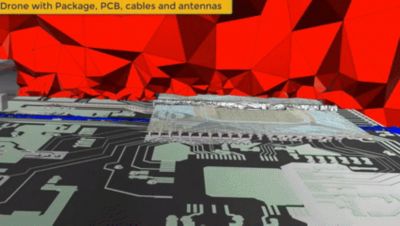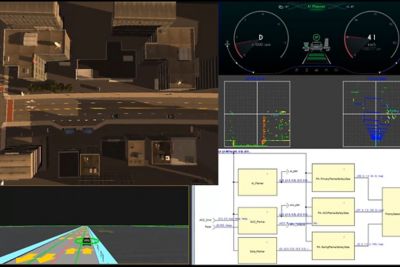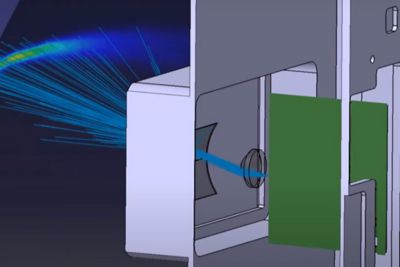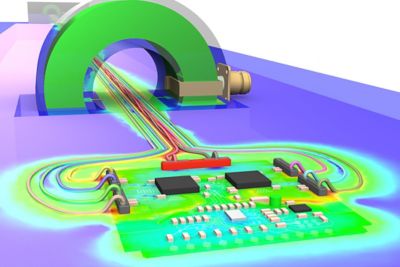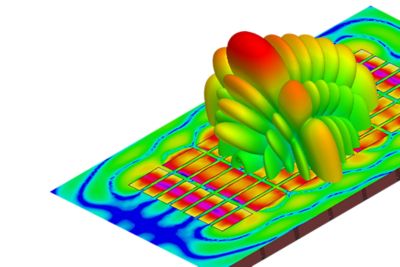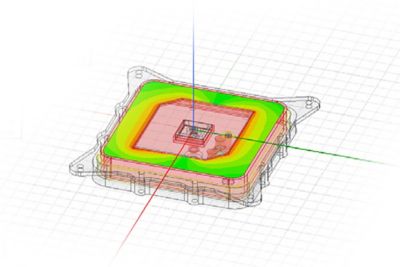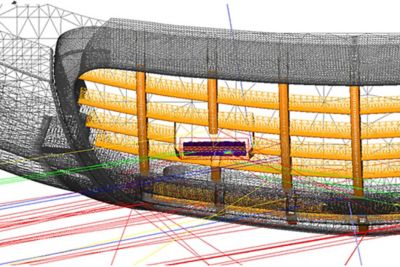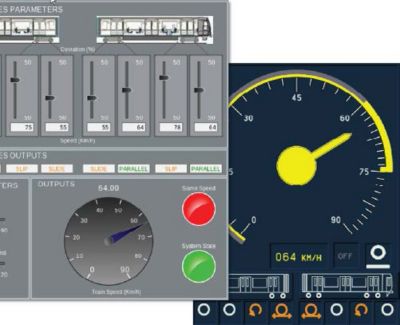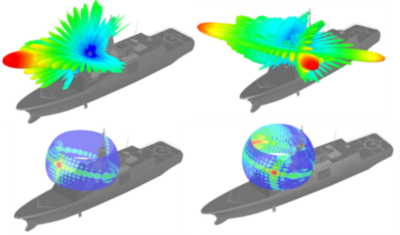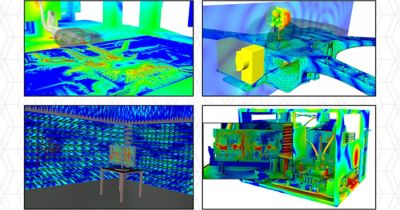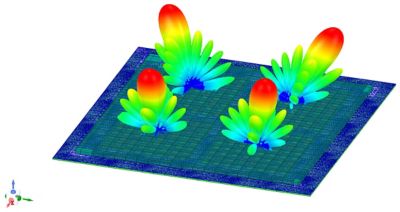製品仕様
HFSSの比類なき性能と確かな精度により、エンジニアはほとんどの複雑なシステムにおけるRF、マイクロ波、IC、PCB、EMIの問題に対処することが可能です。
*Electronics Enterpriseでのみ使用可能
Ansysは次世代の技術者を支援します
学生は、世界クラスのシミュレーションソフトウェアに無料でアクセスできます。
未来をデザインする
Ansysに接続して、シミュレーションが次のブレークスルーにどのように貢献できるかを確認してください。
アンテナ、コンポーネント、インターコネクト、コネクタ、IC、PCBなどの高周波電子製品の設計とシミュレーションに対応する多目的フルウェーブ3D電磁界(EM)シミュレーションソフトウェアです。
Ansys HFSSは、3D電磁界(EM)シミュレーションソフトウェアです。アンテナ、アンテナアレイ、RFまたはマイクロ波部品、高速インターコネクト、フィルタ、コネクタ、ICパッケージ、プリント回路基板など、高周波電子製品の設計とシミュレーションに対応しています。通信システム、先進運転支援システム(ADAS)、衛星、モノのインターネット(IoT)製品で採用される高周波かつ高速なエレクトロニクスを設計するために、世界中のエンジニアがAnsys HFSSを使用しています。
HFSS Mesh Fusionの新しいMesh Fusionテクノロジーを使用した最大規模の最も複雑なシステムの完全連成電磁界シミュレーションは、HFSS内でクラス最高の並列メッシングテクノロジーを提供し、大規模な電磁界システムの高速シミュレーションを可能にします。完全なシステムのSパラメータを数時間ではなく数分で抽出できるようになります。シミュレーション時間を大幅に短縮し、大規模なEM構造のシミュレーション速度を上げることができます。シミュレーションに使用できるマルチコアを活用します。
HFSSの比類なき性能と確かな精度により、エンジニアはほとんどの複雑なシステムにおけるRF、マイクロ波、IC、PCB、EMIの問題に対処することが可能です。
*Electronics Enterpriseでのみ使用可能
Lorem Ipsum has been the industry's standard dummy text ever since the 1500s, when an unknown printer took a galley of type and scrambled it to make a type specimen book. It has survived not only five centuries
Ansys HFSS Mesh Fusionによる大規模設計の解決方法

HFSS Mesh Fusionでは、新しいメッシュアルゴリズムと最新ソルバーを融合することで、安定したメッシュ生成を実現しました。メッシュ生成領域の分割と独立化を可能にし、領域に合わせた最適メッシュアルゴリズムを適用します。
HFSS Mesh Fusionの特許取得済みテクノロジーにより、Ansys HFSSと同じ厳密性、精度、信頼性で、はるかに複雑な設計をシミュレーションできます。これは同じ設計内に、ローカルジオメトリに適したターゲットメッシングテクノロジーを適用することで実現されます。
HFSS Mesh Fusionでは、新しいメッシュアルゴリズムと最新ソルバーを融合することで、安定したメッシュ生成を実現しました。メッシュ生成領域の分割と独立化を可能にし、領域に合わせた最適メッシュアルゴリズムを適用します。
Lorem Ipsum has been the industry's standard dummy text ever since the 1500s, when an unknown printer took a galley of type and scrambled it to make a type specimen book. It has survived not only five centuries
2025年1月
新しいHFSS機能が追加され、性能、メッシング、およびモデリングが強化されました。また、コンポーネント交差の解像や大規模アンテナアレイのサポート強化により、SI/PIエンジニア、RF設計者、アンテナ設計者のためのソリューションが強化されています。

コンポーネント優先度と交差処理の改善によりMesh Fusionが強化され、複雑な交差を解像することで正確な3Dモデリングが可能になりました。SI/PIエンジニアやRF設計者は、ハイテク業界向けの優れたメッシュ品質と正確なシミュレーションを活用できます。
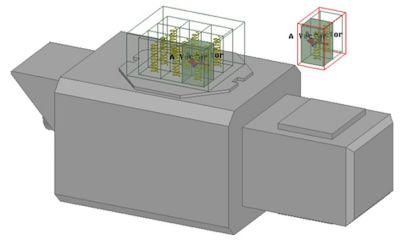
3D Componentアレイ機能の強化により、複数のアレイ、SBR+領域、および格子接触の効率的なシミュレーションが可能になりました。アンテナ設計者やRFエンジニアは、この機能を使用することで衛星通信および航空宇宙分野の大規模アンテナアレイのモデリングが容易に実行できます。
Ansys HFSSのシミュレーションスイートには豊富なソルバーが搭載されており、受動素子ICのような細かいものから、ADASシステムの自動車レーダーシーンなど大規模なEM解析まで、多様な電磁界問題に対応します。信頼性の高い自動アダプティブメッシュ生成の精緻化により、最適なメッシュを割り出して生成することに時間を割くのではなく、設計に集中することができます。
この自動化と精度の保証が、HFSSと他のあらゆるEMシミュレータとの違いです。他のEMシミュレータは、最適で正確なメッシュを生成するために、ユーザーによる手動操作と複数回の解析を必要とします。
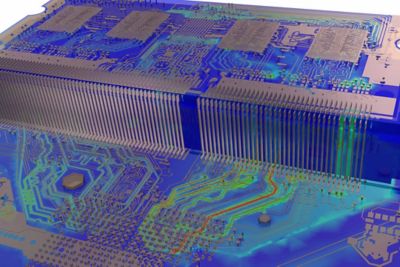
HFSSは、研究開発や仮想設計プロトタイピングにおける最高のEMツールです。設計サイクルを短縮し、製品の信頼性と性能を引き上げます。
HFSS リソース & イベント
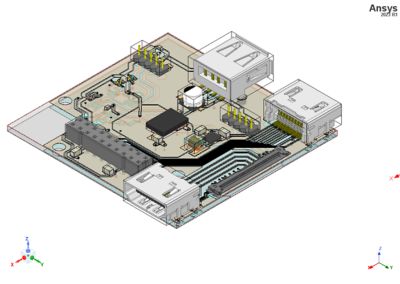
数十年にわたる数値電磁界解析の研究開発を基盤としたHFSSは、3Dレイアウトのワークフローの改善や、Mesh Fusionソルバーの分散型コンピューティングのさらなる最適化という形で、ユーザーに新しい機能をもたらします。
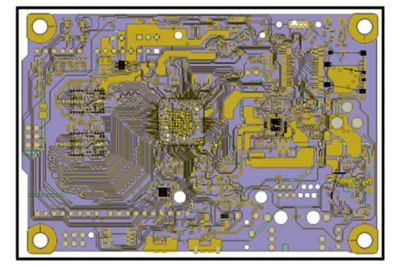
このWebセミナーシリーズでは、HFSSのアダプティブメッシング技術がどのように膨大なPCBレイアウト形状を処理し、最も正確な結果をもたらすかを、実際のお客様の事例をもとにご紹介します。
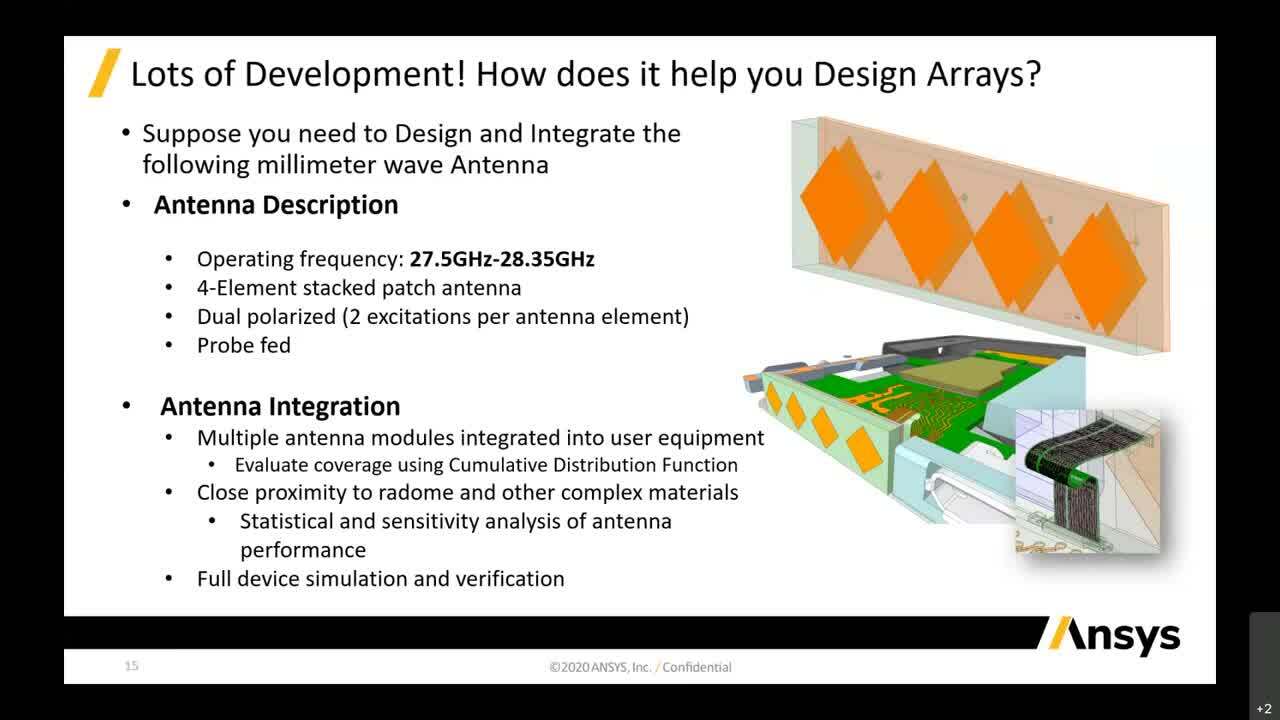
このウェビナーでは、アンテナ設計に関するHFSSの進歩と、この分野のリーダーとして確立されたHFSSの進化について説明します。
FreeFall Aerospace社は、人、場所、モノをつなげるデータを移動するためのより良い方法を開発しています。Ansys HFSSはそれを可能にします。同社のチームは、いくつかの課題を克服しなければなりませんでした。その中でも特に重要なのは、高忠実度シミュレーションソフトウェアの限界、構造のメッシングの難しさ、アンテナを最高の精度でモデリングする機能です。
HFSSは、適切なメッシュを決定するプロセスを自動化し、準備時間を短縮して、所定の時間に得られる結果の精度を向上させました。また、HFSSで完全なモデルを作成することもでき、自信を持ってプロトタイピング段階にただちに移行することができました。
Freefall Aerospace 社が Ansys HFSS を使用して開発プロセスを迅速化し、より価値のある製品を作成した様子をビデオでご覧ください。
Ansysのツールは、UAVによる配送プロセスにおけるエンジニアリングの課題を解決します。ロボットやトラクターが配置された倉庫と組み合わせたUAVをAnsysでシミュレーションし、目的地に荷物を届ける際の性能と安全性を予測することで、産業用途の自律的な未来につながる革新的な技術を実現することができます。
このビデオでは、Ansys HFSS、Ansys HFSS SBR+、EMITを組み合わせた独自の統合ワークフローで、複数のアンテナおよび無線システムを設計する方法を紹介します。
Ansysは、障がいを持つユーザーを含め、あらゆるユーザーが当社製品にアクセスできることがきわめて重要であると考えています。この信念のもと、US Access Board(第508条)、Web Content Accessibility Guidelines(WCAG)、およびVoluntary Product Accessibility Template(VPAT)の最新フォーマットに基づくアクセシビリティ要件に準拠するよう努めています。
エンジニアリング課題に直面している場合は、当社のチームが支援します。豊富な経験と革新へのコミットメントを持つ当社に、ぜひご連絡ください。協力して、エンジニアリングの障害を成長と成功の機会に変えましょう。ぜひ今すぐお問い合わせください。
